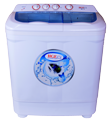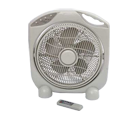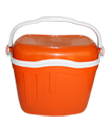Cost of Goods Sold COGS Definition and Accounting Methods
The COGS of a business indicates how efficiently that business manages its supplies and workforce in manufacturing its product. It includes direct costs like manufacturing overhead, materials and the cost of labor. Service providers like law firms, software engineering firms and consultants don’t use COGS since they don’t manufacture anything.
What Is Cost of Goods Sold (COGS)?
The average cost method, or weighted-average method, does not take into consideration price inflation or deflation. Instead, the average price of stocked items, regardless of purchase date, is used to value sold items. Items are then less likely to be influenced by price surges or extreme costs.
Calculating COGS
By subtracting what inventory was leftover at the end of the period, you calculate the total cost of the goods you sold of that available inventory. Consumers often check price tags to determine if the item they want to buy fits their budget. But businesses also have to consider the costs of https://www.quick-bookkeeping.net/ the product they make, only in a different way. LIFO is where the latest goods added to the inventory are sold first. During periods of rising prices, goods with higher costs are sold first, leading to a higher COGS amount. If a business has more inventory on hand, the COGS will be higher.
- You might also keep an inventory of parts or materials for products that you make.
- For example, a company may offer a chargeable support service to people who buy its products.
- The calculation of the cost of goods sold is focused on the value of your business’s inventory.
- Finance Strategists has an advertising relationship with some of the companies included on this website.
- Very briefly, there are four main valuation methods for inventory and cost of goods sold.
- By the end of 2018, Twitty’s Books had $440,000 in sellable inventory.
How Does Inventory Affect COGS?
The ideal selling price should be at least greater than $7 to make a profit since it needs to account for both COGS and the additional indirect costs like marketing and shipping. Cost of Goods Sold (COGS), otherwise known as the “cost of sales”, refers to the direct costs incurred by a company while selling its goods https://www.quick-bookkeeping.net/how-to-reconcile-supplier-invoices/ or services. All companies who keep inventory and sell products must calculate the cost of goods sold. Your accounting period will depend on your business’ preferences and may be monthly, quarterly, or yearly. The direct costs included in this calculation are typically direct material costs and direct labor expenses.
What is the difference between the cost of sales and the cost of goods?
By the end of production, the cost to make gold rings is now $150. Using LIFO, the jeweler would list COGS as $150, regardless of the price at the beginning of production. Using this method, the jeweler would report deflated net income costs and a lower ending balance in the inventory. Cost tracking is essential in calculating the correct profit margin of an item. Your profit margin is the percentage of profit you keep from each sale.
If your business has inventory, it’s integral to understand the cost of goods sold. This includes things like excess materials, defective products, and unused packaging. COGS and operating expenses are different sets of expenditures incurred by the business in running their day-to-day operations.
The formula for calculating cost of goods sold (COGS) is the sum of the beginning inventory balance and purchases in the current period, subtracted by the ending inventory balance. For instance, the “Cost of Direct Labor” is recognized as COGS for service-oriented industries where the production of the company’s goods sold is directly related to labor. By documenting expenses during the production process, a business will be able to file for deductions that can reduce its tax burden. When inventory is artificially inflated, COGS will be under-reported which, in turn, will lead to a higher-than-actual gross profit margin, and hence, an inflated net income.
The cost of goods sold (COGS) is an accounting term used to describe the direct expenses incurred by a company while attempting to generate revenue. Service-based businesses might refer to cost of goods sold as cost of sales or cost of revenues. However, a physical therapist who keeps what are t accounts definition and example an inventory of at-home equipment to resell to patients would likely want to keep track of the cost of goods sold. While they might use those items in the office during appointments, reselling that same equipment for patients to use at home plays a different role in cost calculations.
Costs of revenue exist for ongoing contract services that can include raw materials, direct labor, shipping costs, and commissions paid to sales employees. These items cannot be claimed as COGS without a physically produced product to sell, however. The IRS website even lists some examples of « personal service businesses » that do not calculate COGS on their income statements. Cost of goods sold (COGS) is the determination of how much it costs retailers, wholesalers and manufacturers to produce the goods they sell.
It’s also important to ensure that, where relevant, depreciation and amortisation are calculated accurately and that obsolete inventory is written off appropriately. Its primary service doesn’t require the sale of goods, but the business might still sell merchandise, such as snacks, toiletries, or souvenirs. Twitty’s Books began its 2018 fiscal year with $330,000 in sellable inventory. By the end of 2018, Twitty’s Books had $440,000 in sellable inventory.
You should record the cost of goods sold as a business expense on your income statement. On most income statements, cost of goods sold appears what is cost accounting beneath sales revenue and before gross profits. You can determine net income by subtracting expenses (including COGS) from revenues.
COGS represents the cost of the inventory that has been sold during a period and thus reduces a company’s profits. COGS is an important concept in accounting firms and finance and includes four major components – direct materials, direct labor, manufacturing overhead, and selling expenses. Let’s take a look at each of these components in more detail. Cost of Goods Sold (COGS) is the direct cost of a product to a distributor, manufacturer, or retailer.
Understanding your inventory valuation helps you calculate your cost of goods sold and your business profitability. The average cost method uses a basic average of all similar items in the inventory, regardless of purchase date. LIFO method records the most recent produced items as sold first. In this method, the cost of the latest products purchased is the first to be expensed as COGS. For instance, a company purchased 100 items for $15 each for the 1st quarter of 2022, then purchased 100 more items for $20 each.








